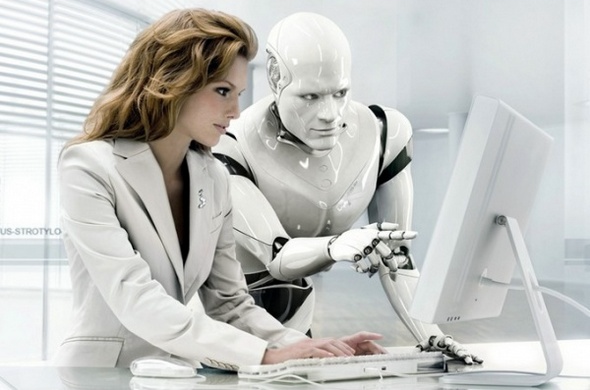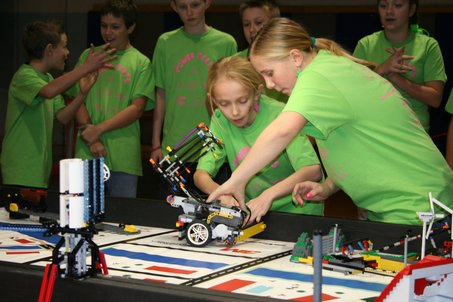
- •Module II
- •Engineering
- •Lesson 1
- •Engineering - what's it all about?
- •It’s time to have fun!
- •Lesson 2 engineering materials
- •Metals and alloys
- •Lesson 3 mechanisms
- •Mechanisms
- •Scissors
- •Lesson 4 safety at work
- •Safety signs and colour at work
- •Accident investigation
- •Lesson 5 lasers
- •We have the solution! our new 1500 watt cnc-controlled laser cutter is at your disposal
- •We have the solution! our new 1500 watt cnc-controlled laser cutter is at your disposal
- •Lesson 2 bizarre inventions
- •Bizarre inventions
- •Student a
- •Student b
- •Lesson 3
- •Inventors
- •Who invented the X-ray?
- •Patent protection
- •What you can patent
- •Lesson 4 robots - the future is now
- •Lesson 5 practical innovations
- •Cork floors, old pickle barrels
- •Technology
- •Lesson 1
- •Modern technology
- •The advantages and disadvantages of technology
- •Anonymous no more You can’t hide—from anybody
- •It’s time to have fun!
- •Lesson 2 nanotechnology
- •Ibm discoveries add promise for nanotech
- •Nanotechnology unfolds futuristic green cars
- •Lesson 3 alternate fuel
- •Asu professors working on cost effective fuel conversion process
- •Alternative fuel sources
- •Solar powered cars
- •Lesson 4 space
- •Life in space
- •Lesson 5 home movie
- •Home movie viewing gets jumstart with new technologies
- •Communication
- •Lesson 1
- •Mobile television
- •Lessons from south korea’s experiment with mobile tv
- •The advantages of mobile tv
- •Estimates peg digital mobile television to reach two-thirds of us homes by 2012
- •Lesson 2 radio
- •Wireless takes many forms
- •What is a wireless device?
- •Lesson 3 a world of connections
- •A world of connections
- •Lesson 4 mobile phones
- •Building the green mobile phone
- •To do with the price of fish
- •Lesson 5 the means of communication in the past, today and the future
- •Is the tide turning for twitter and facebook? one in four young people is 'bored' with social media
- •The blackberry riots Rioters used BlackBerrys against the police; can police use them against rioters?
- •Technical progress and the environment
- •Lesson 1
- •We and the environment
- •Lesson 2 paying for environmental damage
- •Paying for environmental damage
- •Lesson 3 protecting the environment
- •China plan to protect environment
- •Lesson 4 green technology
- •Green day
- •Lesson 5 technological disasters
- •Hungary threatened by 'ecological catastrophe' as toxic sludge escapes factory
- •Japan's nuclear catastrophe
- •Additional lessons
- •Appendix 1 making a presentation
- •Introduction
- •Conclusion
- •Questions
- •Appendix 2 writing a summary
- •Useful phrases
Lesson 4 robots - the future is now

Task 1. Make five predictions about life in 2030, one for each of the following areas: personal life, life of the university, life of the nation, and two other topics of interest to you.
|
|
|
|
|
|
Task 2. Answer the questions.
What is a robot, and how do people use them today?
How might we interact with robots in the future?
Task 3. Watch this video showing a team of students designing, building and programming a robot out of Legos for a robotics competition and answer the questions.
|
|
|
|
What challenges must the team’s robot meet?
Why does the team need to program the robot?
What are some functions the team programmed the robot to do?
What are the roles of the various sensors in the robot?
What kinds of directions can they program?
What kind of information did they need to find out?
How did the students respond to setbacks?
How did they divide and share the work?
What did they succeed in being able to do at the competition?
What else did you notice as you watched?
Task 4.
Work in groups. Think of challenges in your own day-to-day life where a robot could be helpful, or think of workplaces and industrial settings that could benefit from robots.
Brainstorm a design for a robot to tackle this challenge, and prepare to “pitch” your idea to a team of “engineers,” who will vote on which project will receive financing to develop it for commercial or personal use.
Your pitch should include a product name and logo, information about the challenge they’ve identified, sketches and descriptions of their robot, and the solution your robot offers.
Consider the following in designing your robots:
What problem or challenge does the robot solve?
What are some of the functions you will program your robot to carry out?
What materials will it be made out of? Why?
How will the robot sense its surroundings?
How will it move and respond to the environment?
How or why is a robot better equipped to handle this challenge than a human?
What specific functions will the robot carry out? What components will the robot include that help it carry out these tasks?
What will the robot look like? Will it look humanlike? Why or why not?
How will the robot’s appearance influence how people interact with it?
What limitations does the robot have?
Sketch your designs and label them to indicate functionality, materials, interactivity and so on.
Try to sell your idea to an “agency” that funds research and development in science and technology.
The “engineers” might be played by one person from each group.
Present your ideas to the class, and then vote on the best design.
ADDITIONAL TASK.
Task 1a. Watch the video “Robots - The Future is Now” and speak about robot applications.
Task 2. Discuss.
What are the advantages of creating a walking robot that is able to maneuver around the surface of the earth like human beings and other creatures that have legs? Make a list of situations for which walking robots would be better suited than wheeled vehicles.
In movies, on television, and in books, robots are often (though not always) portrayed as the enemies of humankind. Why do you think science fiction writers depict robots as frightening? What qualities make robots scary to humans?
Robots—from miniature earthbound types to those launched into Earth orbit—can be used by our neighbors, the military, local police forces, and our bosses to monitor every movement we make. In a free society that values privacy, there may be a need to put limits on the use of such surveillance-type robots. Take an inventory of the surveillance technology that is already available in your community and school. What rules do you think should be put into place for the acceptable use of each of these technologies?
Artificial limbs may soon be connected directly to the nervous system so that the brain can command them to walk, grasp, wave hello, or even write a novel. Soon we may even be able to send commands to robots by mental telepathy. Will the next step be the creation of a robot brain that can think, learn, and make decisions without human control? Is this a good idea? What technological challenges stand in the way of this happening? Why do so many people think that this will never and should never happen?
It’s probably obvious why it would be better to use a robot than a human to perform certain functions—like diffusing a bomb, for instance, or fighting in a war. On the other hand, would you want a robot pitcher on your favorite baseball team? A robot teacher in your classroom? A robot psychiatrist or president? A robot parent? A robot best friend? What qualities do humans have that you think could never be replaced by robots? Why?






